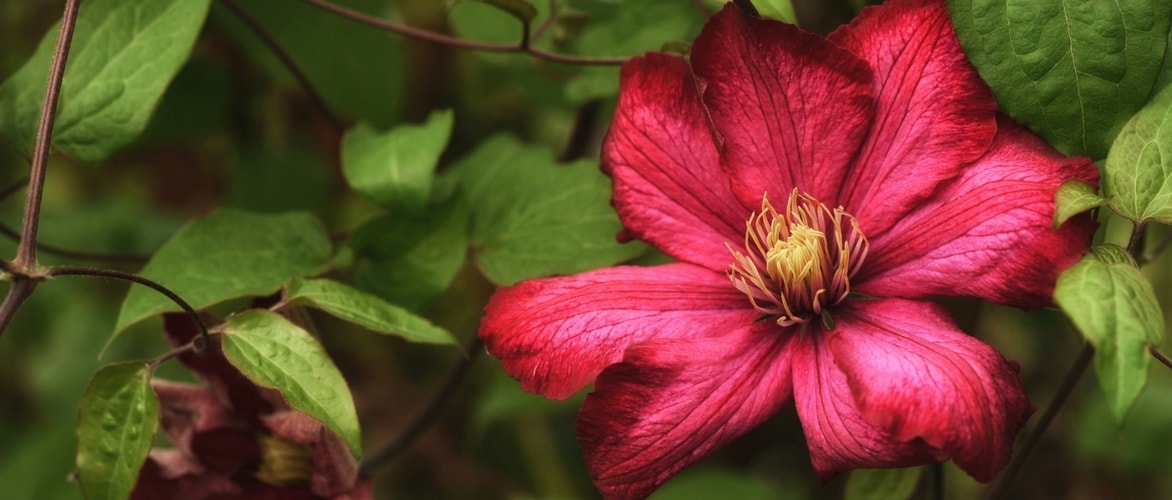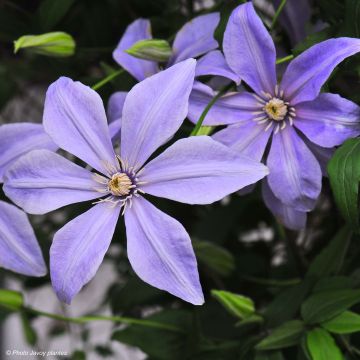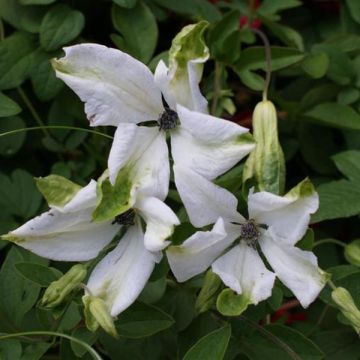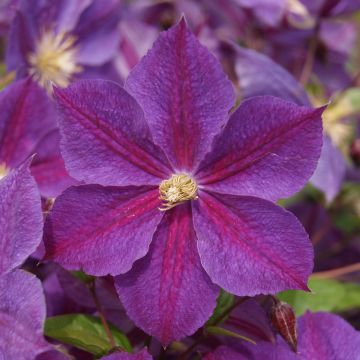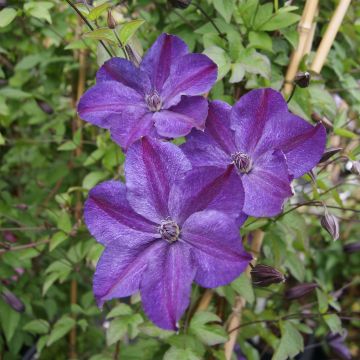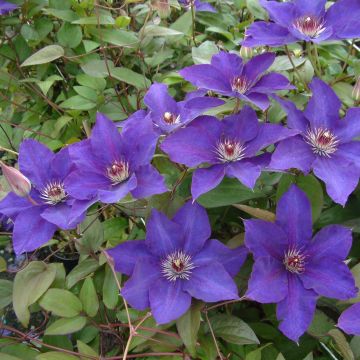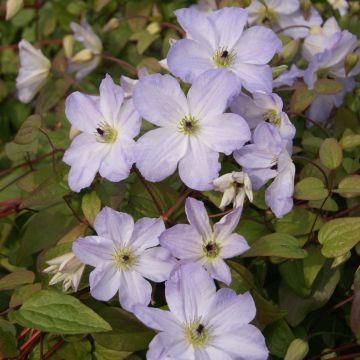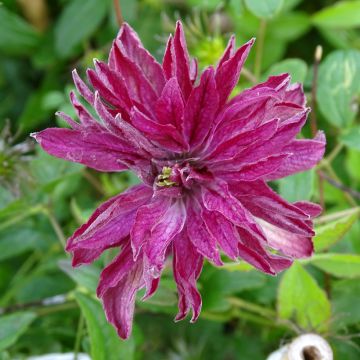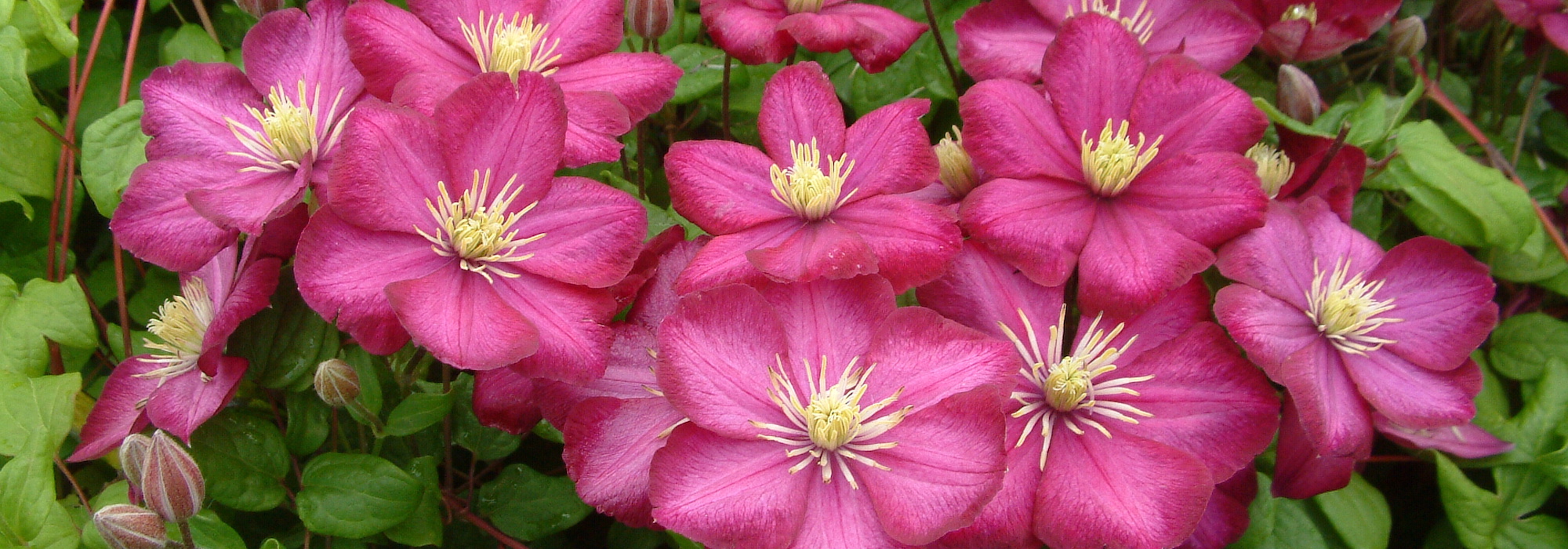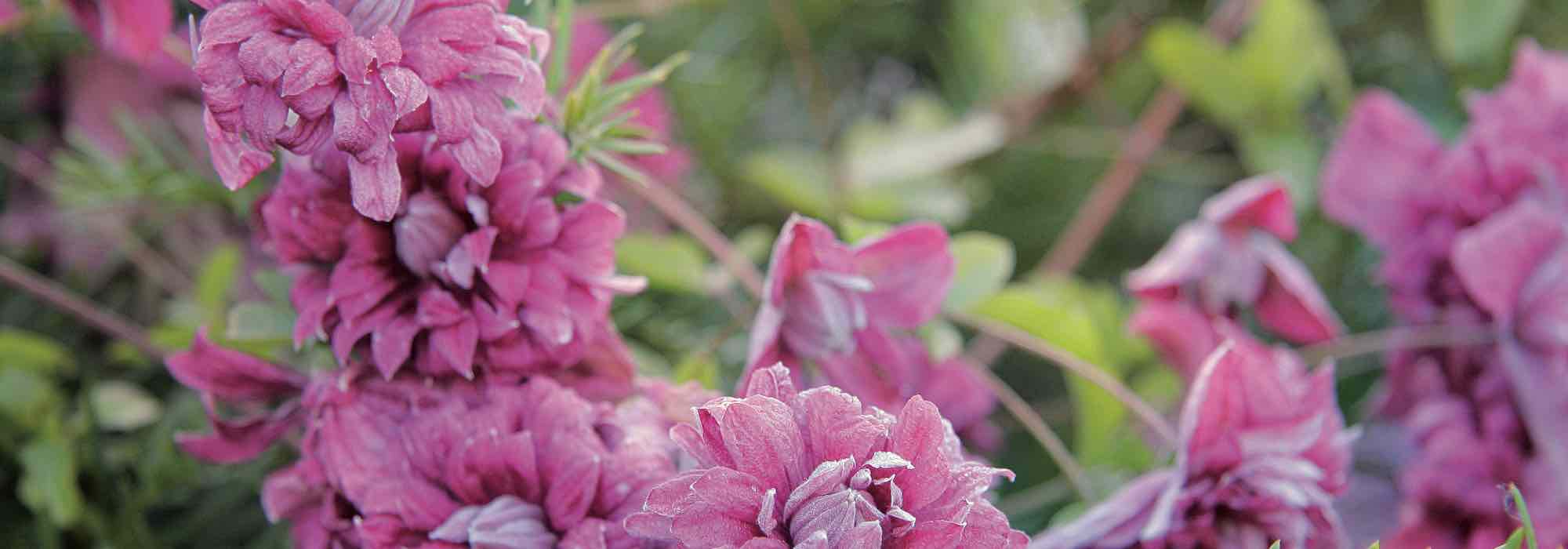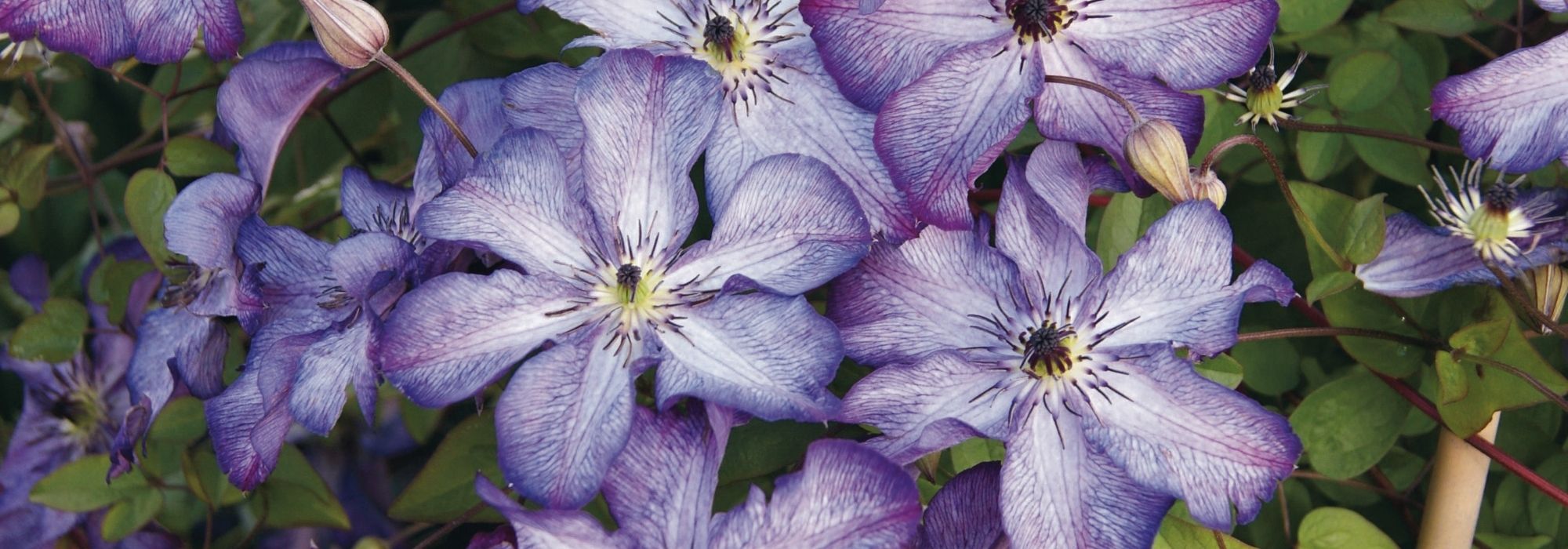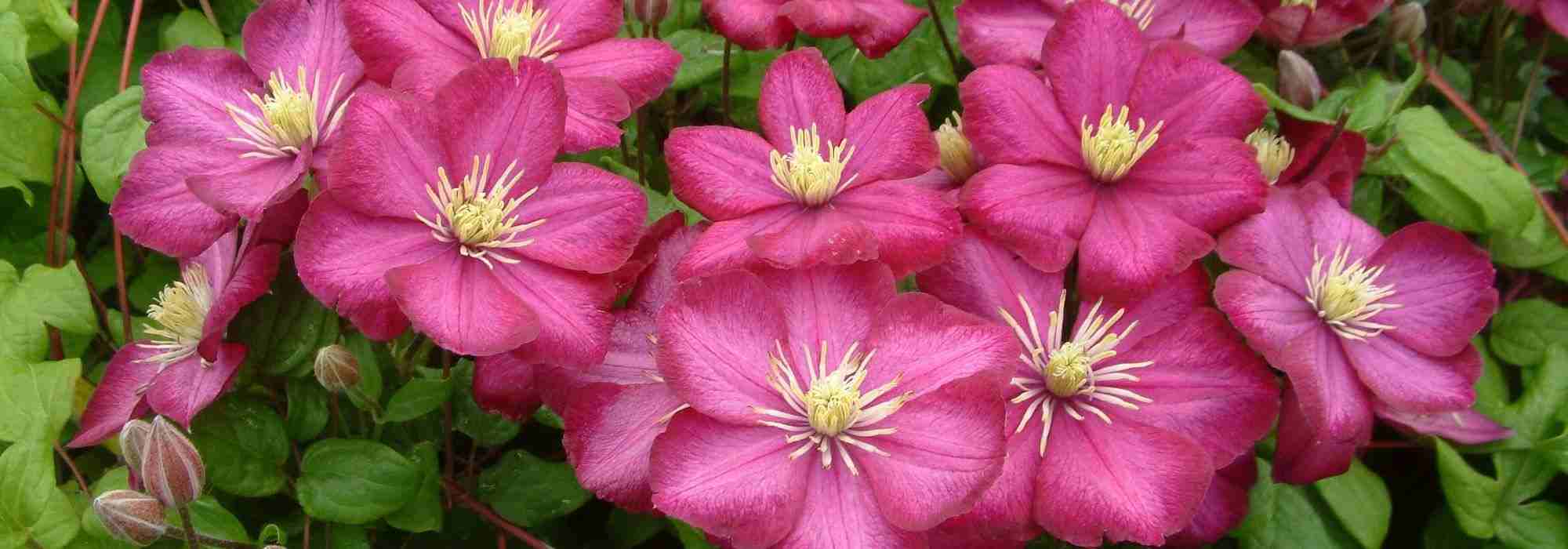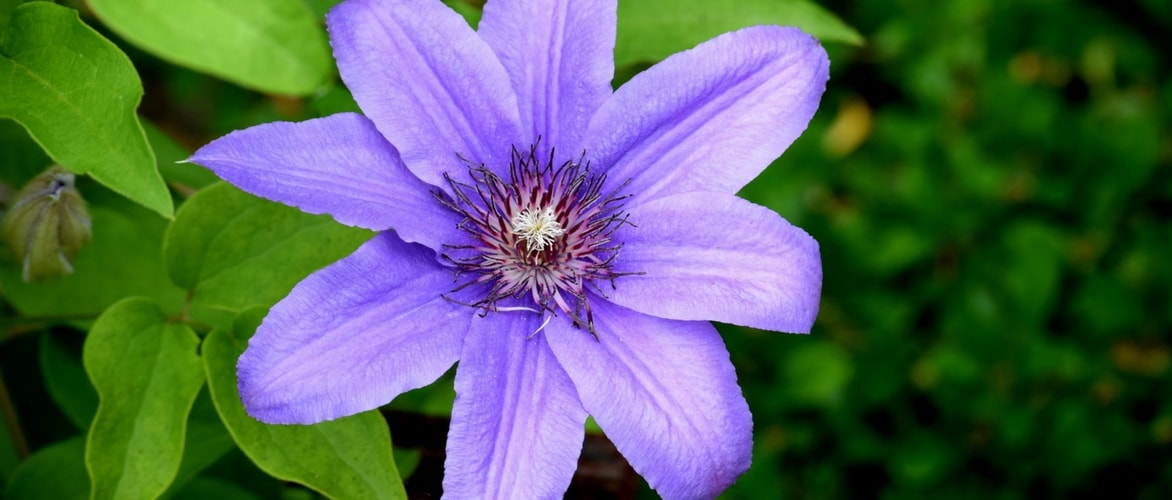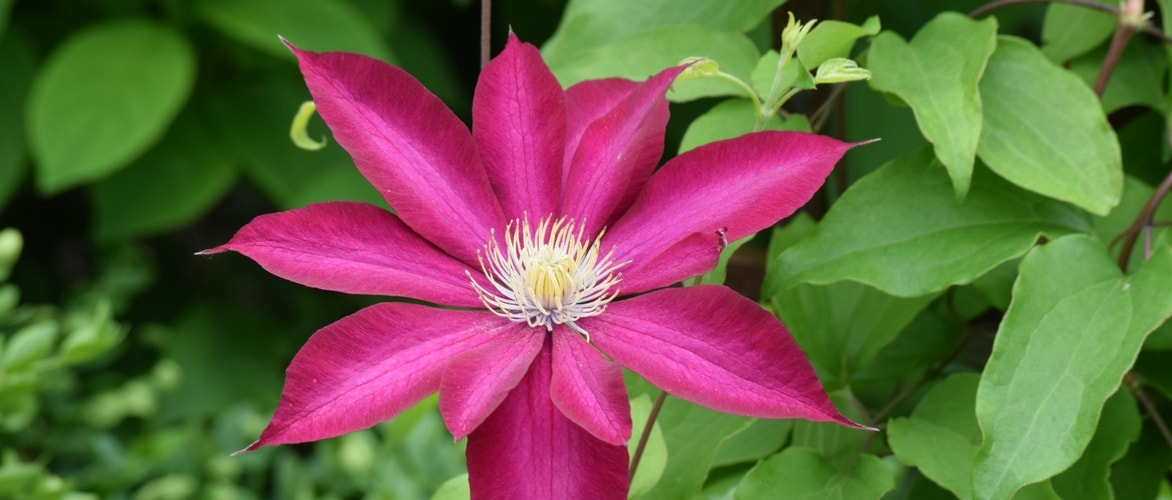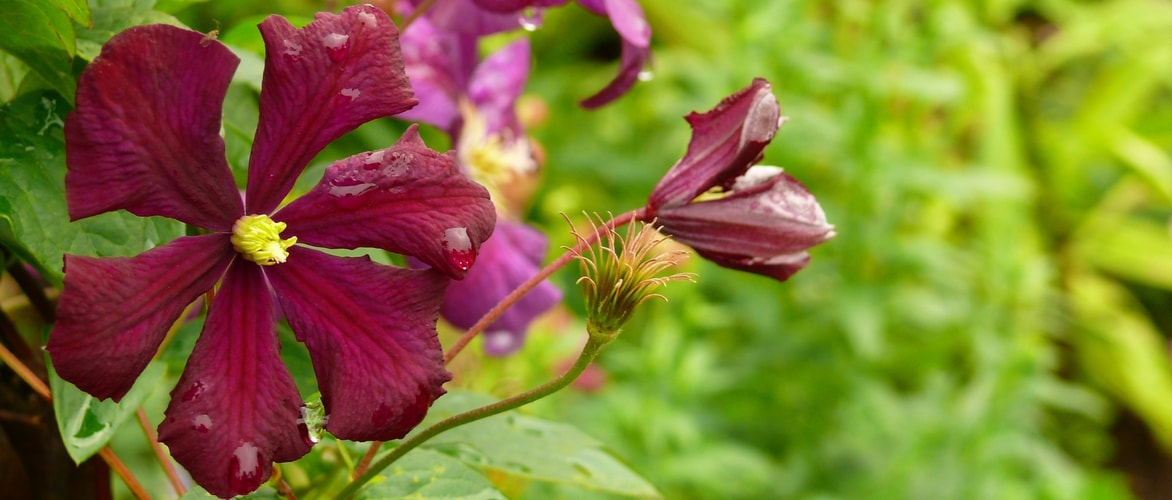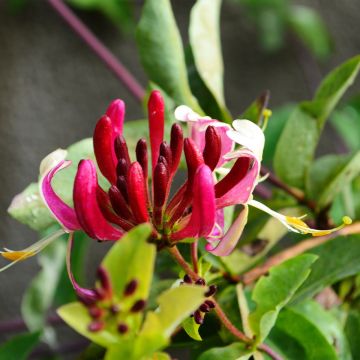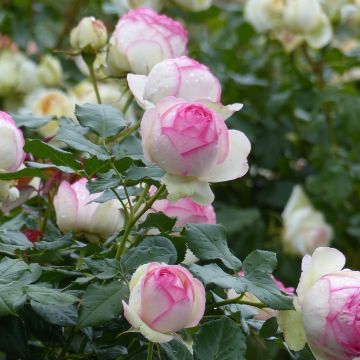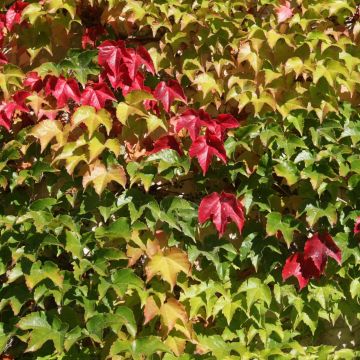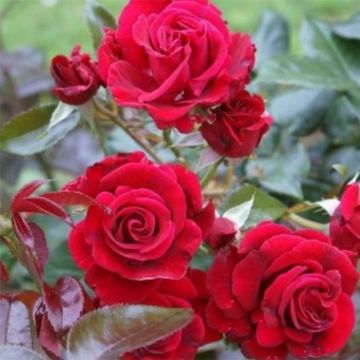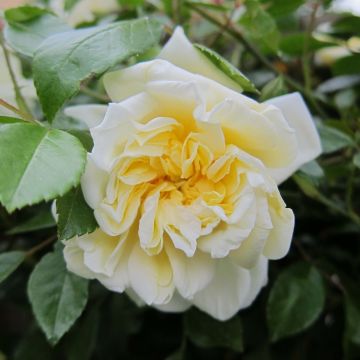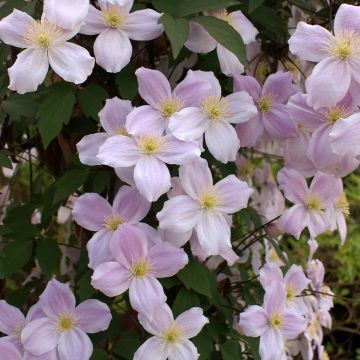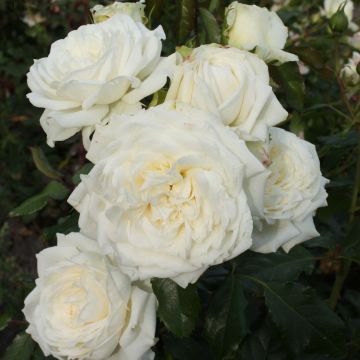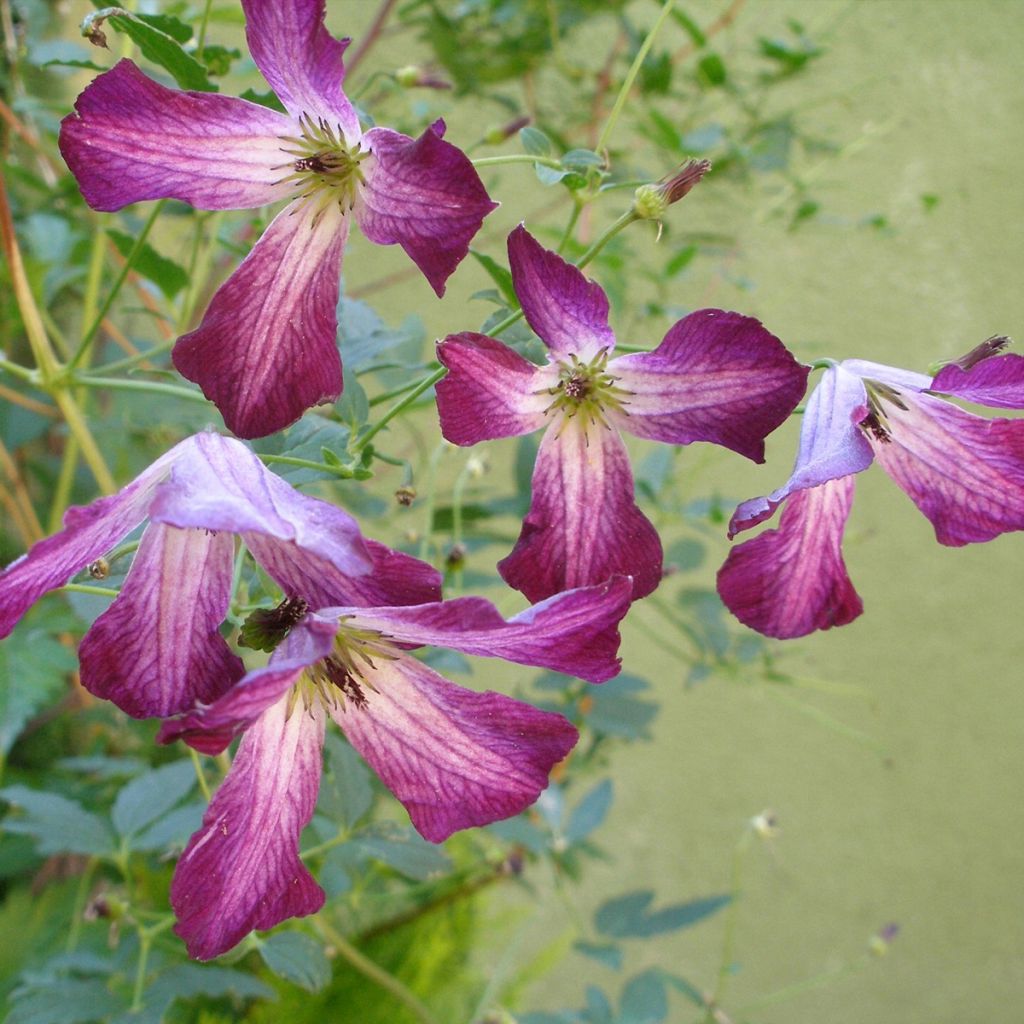

Clematis viticella Walenburg
Clematis viticella Walenburg
Clematis viticella Walemburg
Special offer!
Receive a €20 voucher for any order over €90 (excluding delivery costs, credit notes, and plastic-free options)!
1- Add your favorite plants to your cart.
2- Once you have reached €90, confirm your order (you can even choose the delivery date!).
3- As soon as your order is shipped, you will receive an email containing your voucher code, valid for 3 months (90 days).
Your voucher is unique and can only be used once, for any order with a minimum value of €20, excluding delivery costs.
Can be combined with other current offers, non-divisible and non-refundable.
Home or relay delivery (depending on size and destination)
Schedule delivery date,
and select date in basket
This plant carries a 6 months recovery warranty
More information
We guarantee the quality of our plants for a full growing cycle, and will replace at our expense any plant that fails to recover under normal climatic and planting conditions.
Does this plant fit my garden?
Set up your Plantfit profile →
Description
Clematis viticella 'Walenburg' is a bright variety of Italian clematis, which is covered with beautiful pink-purple flowers illuminated by a white centre. They bloom throughout summer. This lovely natural climber is easy to grow and will delight many gardeners, whether they are experienced or beginners, in all our regions.
Clematis belong to the Ranunculaceae family. They are found in both hemispheres, especially in Europe, the Himalayas, China, Australia, and North and Central America. The hybrid variety 'Walenburg' is a robust, perfectly perennial and hardy plant that is semi-woody and climbing, with slender stems. It will reach 3 to 4m (10 to 13ft) in height, with a minimum spread of 1m (3ft). It possesses the genes of C. viticella, a particularly disease-resistant species with a preference for calcareous soils that are somewhat dry in summer.
The flowers of 'Walenburg' measure about 5cm (2in) in diameter and are composed of 4 rather narrow petals. They appear in successive waves from June-July to the end of September on the current year's shoots. The flowers are either solitary or grouped in cymes and are carried by a long pedicel. They are trailing to semi-erect and have recurved purple tepals adorned with a small white median zone. The heart of the flower is adorned with cream to greenish stamens with purple anthers. The flowering is followed by decorative silver-grey fruits that persist until winter. The pinnate leaves, with lanceolate acute-pointed leaflets, are of a rather deep olive-green. Its leaves dry up and disappear in winter. This clematis clings to the support or host plant by means of petioles transformed into tendrils.
Plant your clematis in the company of climbing roses to extend the flowering period of walls and pergolas until the end of summer. Place it next to pretty perennials such as geraniums, carnations, garden irises, peonies, sage nemorosa, and phlox, which will provide the shade it appreciates at its base. It is a rich and diverse genus, with flowers in all colours, shapes, and sizes. Take advantage of their easy cultivation to give your garden a romantic and bohemian touch. The 'Walenburg' clematis loves to weave itself into bushes and performs very well in a large pot. Let it climb on a lilac, a Fargesia bamboo, a large shrub rose, or even in an informal hedge. It looks wonderful with the dark flowers of Clematis viticella 'Happy Birthday'.
Clematis viticella Walenburg in pictures
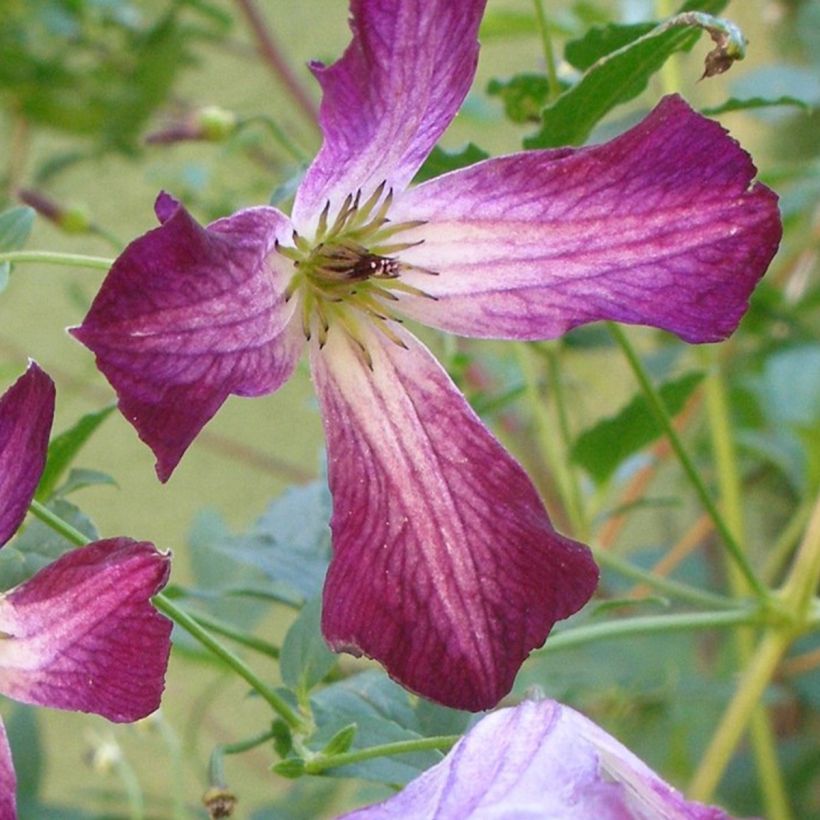

Plant habit
Flowering
Foliage
Botanical data
Clematis
viticella
Walemburg
Ranunculaceae
Cultivar or hybrid
Other Clematis Viticella
View all →Planting and care
Clematis 'Walenburg' will appreciate a sunny or lightly shaded position near a tree. Plant it in well-drained, fertile soil, enriched with leaf compost. Shade the roots and the base of the stem (with a flat tile, for example). In general, clematis wilts in overly wet soil, but varieties derived from C. viticella seem less sensitive and are generally very easy to grow in ordinary, well-worked soil. Work the soil to a depth of 20cm (8in), lightened with good quality compost. Plant it by covering the root ball with 3cm (1in) of soil. After planting, cut back the clematis stems to about 30cm (12in) above a pair of buds. Water regularly and generously during the first few weeks. Do not overwater, as stagnant water can lead to the development of fungus at the base of the plant.
Mulch all clematis in February with garden compost or well-decomposed manure, avoiding direct contact with the stems.
Train the stems, without squeezing them, until the plant clings by itself. Clematis also like to grow freely on neighbouring plants.
After a few years, cover the base of your climbing clematis with a small mound of soil to reduce the risk of wilting while encouraging new shoots to grow from the stump.
Voles and grey worms can attack clematis and devour the stems. Aphids and greenhouse whiteflies are also potential parasites.
Planting period
Intended location
Care
Planting & care advice
This item has not been reviewed yet - be the first to leave a review about it.
Similar products
Haven't found what you were looking for?
Hardiness is the lowest winter temperature a plant can endure without suffering serious damage or even dying. However, hardiness is affected by location (a sheltered area, such as a patio), protection (winter cover) and soil type (hardiness is improved by well-drained soil).

Photo Sharing Terms & Conditions
In order to encourage gardeners to interact and share their experiences, Promesse de fleurs offers various media enabling content to be uploaded onto its Site - in particular via the ‘Photo sharing’ module.
The User agrees to refrain from:
- Posting any content that is illegal, prejudicial, insulting, racist, inciteful to hatred, revisionist, contrary to public decency, that infringes on privacy or on the privacy rights of third parties, in particular the publicity rights of persons and goods, intellectual property rights, or the right to privacy.
- Submitting content on behalf of a third party;
- Impersonate the identity of a third party and/or publish any personal information about a third party;
In general, the User undertakes to refrain from any unethical behaviour.
All Content (in particular text, comments, files, images, photos, videos, creative works, etc.), which may be subject to property or intellectual property rights, image or other private rights, shall remain the property of the User, subject to the limited rights granted by the terms of the licence granted by Promesse de fleurs as stated below. Users are at liberty to publish or not to publish such Content on the Site, notably via the ‘Photo Sharing’ facility, and accept that this Content shall be made public and freely accessible, notably on the Internet.
Users further acknowledge, undertake to have ,and guarantee that they hold all necessary rights and permissions to publish such material on the Site, in particular with regard to the legislation in force pertaining to any privacy, property, intellectual property, image, or contractual rights, or rights of any other nature. By publishing such Content on the Site, Users acknowledge accepting full liability as publishers of the Content within the meaning of the law, and grant Promesse de fleurs, free of charge, an inclusive, worldwide licence for the said Content for the entire duration of its publication, including all reproduction, representation, up/downloading, displaying, performing, transmission, and storage rights.
Users also grant permission for their name to be linked to the Content and accept that this link may not always be made available.
By engaging in posting material, Users consent to their Content becoming automatically accessible on the Internet, in particular on other sites and/or blogs and/or web pages of the Promesse de fleurs site, including in particular social pages and the Promesse de fleurs catalogue.
Users may secure the removal of entrusted content free of charge by issuing a simple request via our contact form.
The flowering period indicated on our website applies to countries and regions located in USDA zone 8 (France, the United Kingdom, Ireland, the Netherlands, etc.)
It will vary according to where you live:
- In zones 9 to 10 (Italy, Spain, Greece, etc.), flowering will occur about 2 to 4 weeks earlier.
- In zones 6 to 7 (Germany, Poland, Slovenia, and lower mountainous regions), flowering will be delayed by 2 to 3 weeks.
- In zone 5 (Central Europe, Scandinavia), blooming will be delayed by 3 to 5 weeks.
In temperate climates, pruning of spring-flowering shrubs (forsythia, spireas, etc.) should be done just after flowering.
Pruning of summer-flowering shrubs (Indian Lilac, Perovskia, etc.) can be done in winter or spring.
In cold regions as well as with frost-sensitive plants, avoid pruning too early when severe frosts may still occur.
The planting period indicated on our website applies to countries and regions located in USDA zone 8 (France, United Kingdom, Ireland, Netherlands).
It will vary according to where you live:
- In Mediterranean zones (Marseille, Madrid, Milan, etc.), autumn and winter are the best planting periods.
- In continental zones (Strasbourg, Munich, Vienna, etc.), delay planting by 2 to 3 weeks in spring and bring it forward by 2 to 4 weeks in autumn.
- In mountainous regions (the Alps, Pyrenees, Carpathians, etc.), it is best to plant in late spring (May-June) or late summer (August-September).
The harvesting period indicated on our website applies to countries and regions in USDA zone 8 (France, England, Ireland, the Netherlands).
In colder areas (Scandinavia, Poland, Austria...) fruit and vegetable harvests are likely to be delayed by 3-4 weeks.
In warmer areas (Italy, Spain, Greece, etc.), harvesting will probably take place earlier, depending on weather conditions.
The sowing periods indicated on our website apply to countries and regions within USDA Zone 8 (France, UK, Ireland, Netherlands).
In colder areas (Scandinavia, Poland, Austria...), delay any outdoor sowing by 3-4 weeks, or sow under glass.
In warmer climes (Italy, Spain, Greece, etc.), bring outdoor sowing forward by a few weeks.






























